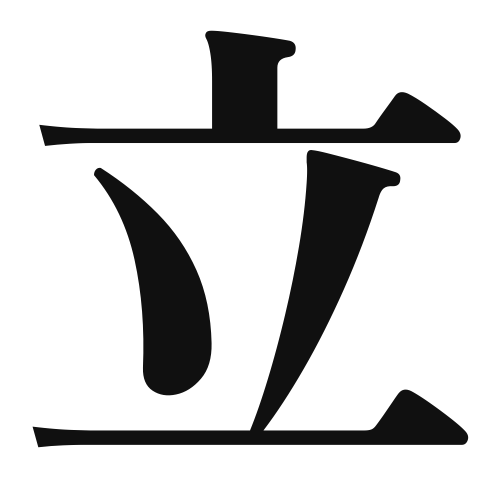1. Overview of Meaning
The kanji “立” (pronounced “tachi” or “ritsu”) means “to stand” or “to rise.” It conveys the idea of being upright or in a vertical position, often associated with stability and presence.
2. Formation and Radical
Formation of the Kanji: The kanji “立” is a pictogram, originally depicting a person standing. It represents the action of standing up or being in an upright position.
Radical: The radical for “立” is also “立” itself, which is used in various kanji related to standing or establishing something.
3. Examples of Usage
Common Words and Phrases:
- 立ち上がる (tachiagaru) – to stand up
- 立場 (tachiba) – position or stance
- 立論 (ritsuron) – argument or thesis
Example Sentences in Daily Conversation:
- 彼はすぐに立ち上がった。 (Kare wa sugu ni tachiagatta.) – He stood up immediately.
- あなたの立場を理解しています。 (Anata no tachiba o rikai shiteimasu.) – I understand your position.
4. Synonyms and Antonyms
Similar Kanji:
- 座 (za) – to sit; this kanji represents the opposite action of standing.
- 起 (ki) – to rise; while it also conveys the idea of rising, it can refer to getting up from a lying position.
Antonyms:
- 座 (za) – to sit, which is the opposite of standing.
5. Cultural and Historical Background
Relation to Japanese Culture: The concept of standing is significant in Japanese culture, symbolizing strength, readiness, and respect. For example, standing during a national anthem is a sign of respect.
Proverbs and Idioms:
- 立つ鳥跡を濁さず (Tatsu tori ato o nigosazu) – A standing bird does not muddy its nest; this proverb means to leave a place clean and tidy.
